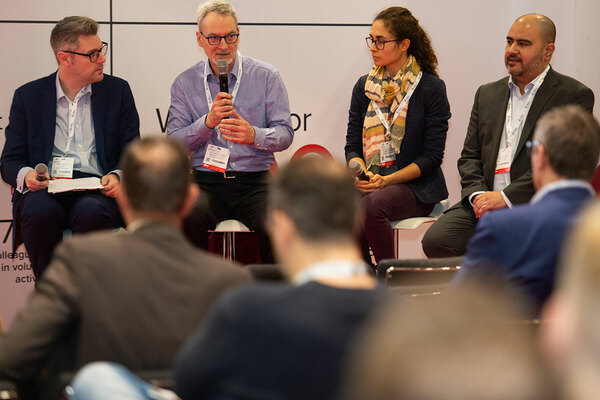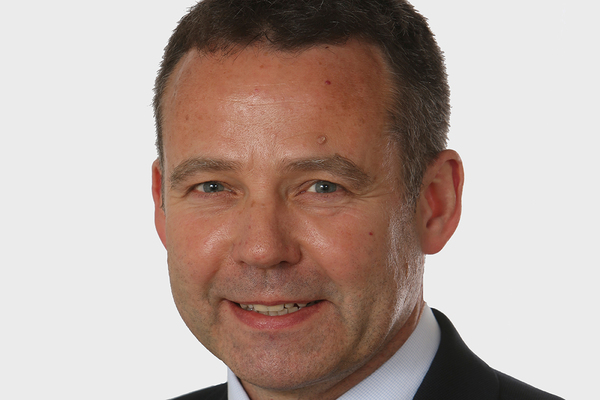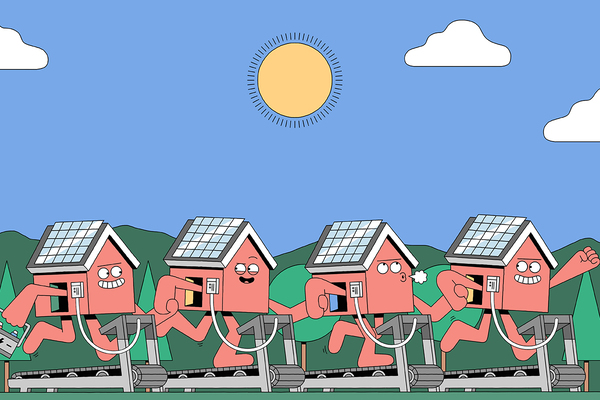What are landlords doing to reduce energy bills?
Climate change targets have focused the sector on sustainability and efficiency. Inside Housing carried out a survey to find out what strategies are in place. Picture by Getty
In association with:

With many councils declaring a climate change emergency, there is a renewed focus on energy efficiency in the social housing sector. But, as we begin 2020, what is the starting point? Are people working for social landlords confident that adequate attention is being paid to sustainability – and are there potential savings to be made by focusing more closely on efficient energy use?
An Inside Housing survey, run in association with Inenco, has sought to find the answers to some of these complicated questions.
The responses – from 246 people working in the social housing sector, with the vast majority (72%) within housing associations – suggest that there is an interest in sustainability in the sector. But they also cast doubt on the extent to which evidence-based decisions are being made.
When asked whether they are confident that their organisation has a robust and clearly established strategy on the energy it procures, for instance, just 34% of respondents say “yes”.
A full quarter state that, while a strategy is in place, they think it would benefit from further review or refinement. And – perhaps most strikingly – 41% say that either no such strategy exists, or that they do not know if one does.
According to Mark Winn, lead consultant at Inenco, this is not an uncommon state of affairs. “I don’t think it’s unique to the social housing sector, to be fair,” he says.
“I think energy is sometimes treated as a necessary evil and it can be quite complicated, and therefore there is very little appetite to fully understand it and put together a robust strategy.”
He says that, for social landlords, those challenges are compounded by some additional, sector-specific complexities.
“Predominantly a social housing provider will have a significantly higher number of meters than many other organisations. And the cost and consumption per meter is much lower, because the reality is these are communal stairwells, shared areas that they’re paying for.”
Perhaps it comes as no surprise, then, that only 21% of respondents describe themselves as “very confident” in the accuracy of their organisation’s energy bills.
Some 38% say they are somewhat confident that such bills do reflect the amount of energy being used and the amount of money that should be paid as a result. A quarter, meanwhile, are not at all confident and 19% say they do not know.
Mr Winn reflects: “Quite rightly a social housing provider doesn’t necessarily have the resource to check those bills every month, because there are hundreds, if not thousands, landing on their desk.”
There is doubt among our respondents about whether such bills represent the best price it is possible to pay. Indeed, one in 10 respondents suspect that their organisation is paying over the odds for its energy.
And while slightly more than half feel that a good price is being paid, they feel it is likely that further savings could be made.
The consequence, in many instances, may be higher service charges for residents. Some 34% of those who completed the survey say the price its organisation pays for energy impacts such charges to some extent, and 17% say it impacts to a large extent. Only 6% say there is no connection between the amount paid by the organisation for energy and the amount paid by residents on service charges.
In recent years, many of those residents will have been encouraged to install smart meters with a view to cutting their energy use and paying less. But in few instances, it seems, is their social housing provider taking the same course of action.
Only three per cent of our respondents say such meters are in place across the entirety of their organisation’s estate or stock. And around one in 10 simply say they are not using smart meters to monitor the organisation’s consumption of energy.
For Mr Winn, that may not be an illogical or problematic decision. “If it’s in a communal stairwell, a smart meter isn’t necessarily going to give you what you need to help you use less energy and be more efficient,” he argues.
Installing motion sensors so that a communal hallway light only turns on when needed is likely to be a more effective way of using less electricity and a more cost-effective investment, he says.
Indeed, when respondents speak of the measures already taken to reduce the energy consumption of their organisations, changing relevant fixtures emerges as a key theme.
Well over half (64%) say that their organisation has installed measures such as energy-saving light bulbs or movement-activated lights, switched to more energy-efficient computers or installed updated heating systems.
It seems there is also widespread communication to staff at social housing providers about energy efficiency, with 56% of those who responded to our survey saying that such efforts are being made within their organisation.
Mr Winn says his experience, working across sectors, is that social housing providers “appear to be leading the way” on getting messages out about the need to become cleaner, greener, more efficient organisations. And yet 41% of respondents say they do not know if any of their organisation’s energy supply comes from renewable sources.
It sums up the sort of contradiction Mr Winn says he sees throughout the survey results. Yes, there is a focus on energy – in both a cost context and an environmental one.
Social landlords’ desire to bolster energy efficiency within homes is accompanied by a desire to do the same within the actual organisation. But it seems that in many instances this is not filtering through to a consolidated and reasoned strategy on the energy a social landlord is procuring.
“It feels like there is some action that has been taken, but it’s not necessarily an embedded culture,” Mr Winn suggests.
“Clearly there are some good steps being taken. But there’s more to happen to make it embedded as a cultural process and attitude that will then drive the efficiencies and the green agenda further up the hierarchy within an organisation.”











